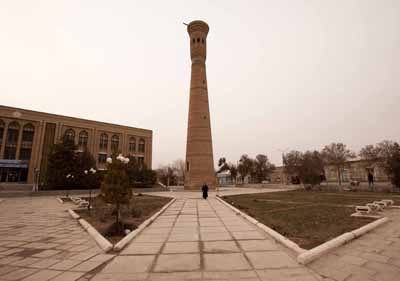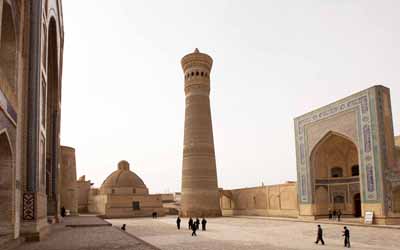Uzbekistan | Caravanserais | Vabkent Minaret | Tavois | Rabat-i-Malik

Before indulging in further Ambulations of Bukhara City itself I decided to wander north through the Bukhara conurbation and look for other monuments which pre-dated the Mongol invasion and managed to survive down to the present day. My first stop was Vabkent, seventeen miles north-northeast of Bukhara. When first Chingis Khan and his army approached the Bukhara Oasis they may well have homed in on Vabkent’s minaret, which was v isible for miles around and served as a beacon for caravans and travelers approaching from the north . Commissioned by Abd al-Aziz II, a member of a powerful Bukhara family during the time of the Qara Khitai Khanate (c. 1125–1218), the 127-foot high minaret, completed in 1198–1199, was the second highest in Mawarannahr, after the Kalon Minaret in Bukhara itself. The Qara Khitai, as you probably know, were a remnant of the old Khitan Dynasty in China—they also Controlled Most of Mongolia At The Time )—who had migrated west and established an empire in Inner



